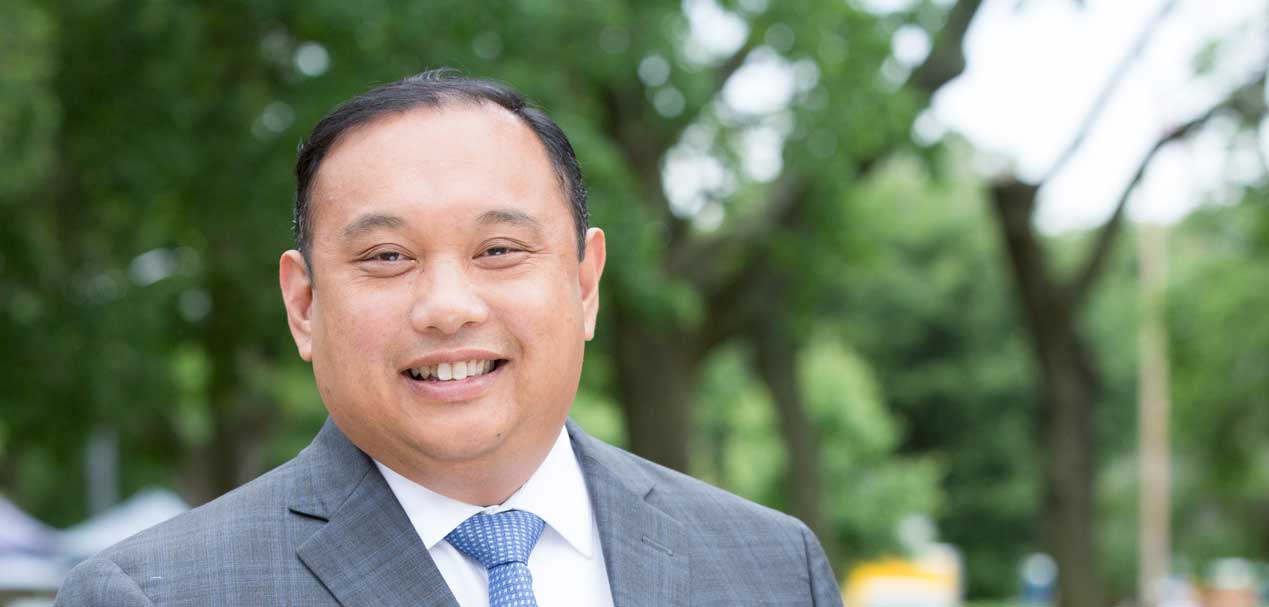 Editor’s note: The Lavarro campaign reached out wanting to discuss real estate development in Jersey City. We feel anything furthering the conversation around this increasingly controversial topic is beneficial. With that said, Jersey Digs does not endorse any candidate. We welcome continued discussion from other candidates or, after tomorrow, our newly elected officials.
Editor’s note: The Lavarro campaign reached out wanting to discuss real estate development in Jersey City. We feel anything furthering the conversation around this increasingly controversial topic is beneficial. With that said, Jersey Digs does not endorse any candidate. We welcome continued discussion from other candidates or, after tomorrow, our newly elected officials.
Local government can play a significant role in how a city is developed, and Jersey City’s upcoming elections will let residents decide if they generally like what they see in their neighborhood. On the eve of voters heading to the polls, Jersey Digs recently chatted with City Council President Rolando Lavarro Jr. about the route the city is heading in.
“Most would acknowledge that local development is booming, almost to an unprecedented level,” says Lavarro, who also serves as Chairman of the Jersey City Redevelopment Agency. He thinks the city is moving in the right direction, and credits a shift in policy that helped encourage development in neighborhoods outside of Downtown.
“We made an effort to establish a tax policy that incentivizes development away from the waterfront when we first started out four years ago,” says Lavarro. Mayor Steve Fulop and the Council worked together to revamp the city’s abatement policy back in 2013, creating a six-tier system that provides more benefits to developers building in neighborhoods like Journal Square, Bergen-Lafayette and Greenville, and fewer perks for those building along the waterfront.
When asked if there is any project in Jersey City that he sees as a model for future development, he cites Hudson Exchange, which created the first Downtown developments including a 20% affordable housing component in over three decades. While the project came with a price of a 20-year tax abatement, Lavarro says the break was needed due to the cost of Downtown’s real estate.
“Other parts of the city can achieve those affordable housing numbers in new developments without as generous of a tax abatement,” Lavarro says. Still, the role of abatements is hotly debated within Jersey City. Does Lavarro think there are too many? Too few?
“I don’t know if there’s a hard-fast number,” he says. “I don’t view the abatements as a positive or negative; they can be a tool to achieve revitalization goals.” Lavarro says the city government grants tax abatements to incentivize, with the goal of eventually whittling down the level of subsidies awarded over time.
“Early investors who take risks in certain neighborhoods will get a better tax incentive initially, while those coming in later to the game will get a less generous abatement,” Lavarro says.
Lavarro, first elected in 2011, also noted that the market in Jersey City is always changing, especially in emerging neighborhoods. He says that one of the city’s goals under the Fulop administration is to revise development policies to better reflect the reality on the ground.
“Investors want clarity,” he says. “We want to make [rules on tax abatements] clear and provide stability to market.”
Despite projects like Hudson Exchange, there have been tax abatements granted to projects that lack affordable housing, including several in Journal Square. Lavarro says the city is evaluating changes to affordable housing zoning in their many redevelopment plans, and an ordinance for inclusionary zoning Councilwoman Watterman introduced earlier this year was tabled, but is still a priority.
Lavarro says the city has other opportunities to create affordable housing, specifically citing the Bayfront Redevelopment Plan as a large parcel that should include some affordable component. Citywide, a re-examination of the master plan will be happening with a new planning director, which Lavarro says gives them an opportunity to look at plans in different neighborhoods more comprehensively.
Another issue that regularly comes up in Jersey City is the abundance of rentals under construction seemingly at the expense of projects that encourage home ownership. Lavarro says he’d like to see more condos and homes constructed, but the realities of the market make that goal hard to facilitate.
“We’ve had substantial conversations about this issue, but planning and tax professionals we hired determined there wasn’t much the government could do to encourage developers to build homes for sale,” Lavarro says. Nonetheless, he says the city’s Abandoned Properties program can be used to eminent domain derelict properties and prioritize their rehabilitation for home ownership, a practice he supports.
As development chugs along and thousands of new residents are added, overcrowding in Jersey City’s schools has become a concern for some residents. Lavarro cites the 25 Columbus project, which will see the construction of a school at no cost to the taxpayer, as an example of the city’s efforts to create new facilities for a growing population. He says another development that features a school construction component should hopefully be made public next year, and he is looking forward to a new administration in Trenton working with the city to build more schools.
Lavarro is running for a second full term on a Fulop-backed slate with fellow incumbents Daniel Rivera and Joyce Watterman. Sean Connors, Brian Lane, Esmeralda Trinidad, Michael Winds, and Esther Winter are also running for Council-at-Large seats, and both the mayor’s office and six other Ward council seats will be up for grabs tomorrow.